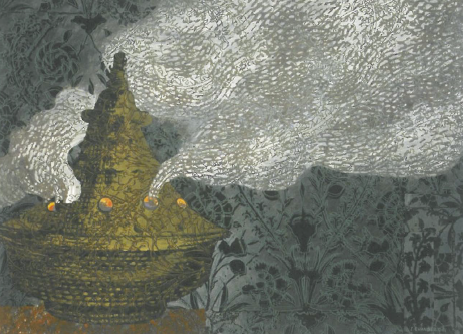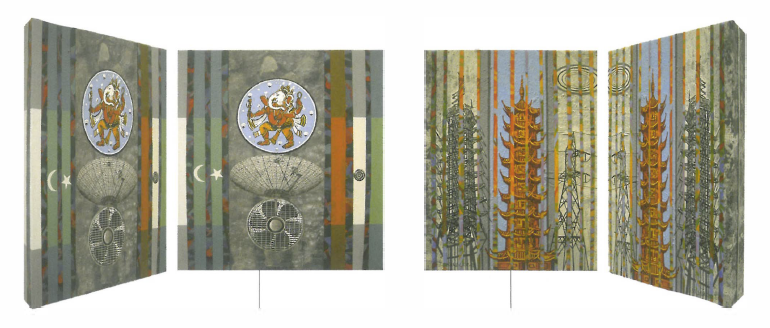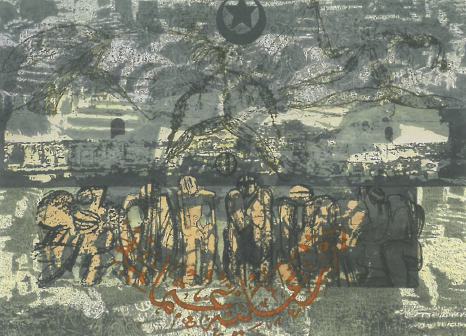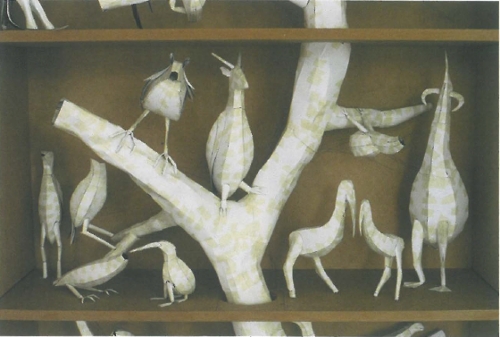
Adelaide artist and an outstanding painter of his generation. Ian Chandler died following a short illness in November 2004. His sudden passing seemed at odds with his artistic trajectory which, with his October 2004 Greenaway Art Gallery exhibition, suggested that that the artist was embarking on a new line of enquiry which at one level was drawing deeply on insights and resolutions long-embedded within his practice while forging into new territory. In retrospect, the muted colours that characterised the colour palette of paintings in his final exhibition could have been read as a sign of greater introspection as if Chandler was looking deeper into and reflecting on the sum of his work to date. This colour shift had happened once before, in the mid 1980s, when the artist appeared to have retreated from the hard-edge, high chromatics of image making which had propelled his art and national reputation across the 1970s as a painter of distinctly original images, particularly in his construction of meta-worlds made credible by an impeccable technique and fluent exploitation of colour-space tonalities.
In work of the early to mid 1970s the central nature of Chandler's thoughts on a new technology-mediated world were revealed in images which depicted the earth as a globe or notional landscape at the mercy of mechanised, dehumanising forces. The 1980s saw changes emerge within Chandler's art, notably a natural-toned, figurative style. In close-ups of plants and seed-pods produced in the mid 1980s a balance was struck between primary form and the interwoven complexity of patterning.
While nature in the form of trees, plants and rocks disappeared from Chandler's work in the mid to later 1990s its models of complex interactions of energy had been absorbed as metaphors for social, economic and political forces at work. This central idea was to be spectacularly realised in his large canvases of the mid l980s to mid 1990s. In their seething cross-currents of waving lines and complex overlays of ancient symbols and computer-like circuitry these images created force fields of visual energy which drew the viewer into a vortex of speculation about the place of received wisdom and belief in a contemporary world.

The artist's two final exhibitions of work held late in 2004 (recent paintings at Greenaway Gallery and Package Paintings at The University of Adelaide) offered family members, previous South Australian School of Art colleagues, other professional colleagues and friends a richly creative context in which to say a final word to the artist and then with his passing, to reflect on his life and work. The Package Paintings were a crystallisation of the ideas and iconography which characterised his high-energy, socially critical canvases of the 1990s. Compact in size and constructed to resemble game pack boxes, these canvases looked like the largest of his banner-like works collapsing into heavy matter black hole states of compressed energy. From Chandler's earliest works to the most recent, his interest in the cosmic context of the earth's and humanity's existence endured.

His 2004 Greenaway exhibition carried the artist's characteristic strategy of sustained high-level energy into calmer waters. Recent travel to Turkey anchored this body of work, to a point. There was an elegiac note of introspection and repose in images dominated by trademark Chandler logos, in this instance tughras (calligraphic monograms used by sultans), a prayer rug, fragments of patterns possibly sourced from a traditional ceramic bowl and in Arrival at Militos, a ghostly image of a Turkish coastline. In this same work, adding complexity to the transparent overlays were Australian Aboriginal rock drawings of leaping figures and beneath, evocations of ancient carved figurines, possibly Mediterranean or perhaps African in source. In grounding this body of work within Turkey and its history of conflict, dialogue and metamorphosis, between eastern and western cultures, Chandler had found the place where all roads in terms of his life-long search for cultural meaning converged. His art, which began as a journey into meta-space, had begun to turn slowly back to a sense of quietus, a process symbolised perhaps by the work Tajine - The Long Slow Simmer in both its title and form. A traditional tajine issued billowing clouds of rhythmical lines across a richly decorated field. In an era of global uncertainty and division, Ian Chandler's art continued to the end to eloquently call upon mysteries of ritual and form to speak for a common humanity and future.












